University News Last updated 31 January 2023

The Birmingham City University archives are a real treasure trove of what BCU was, and what it has become, since 1843 – from old photos and Birmingham Polytechnic jumpers to past issues of ‘Newsline’, which was the university newspaper for over 20 years.
Published in the December 1992 issue is a small section about an Industrial Design graduate who had designed Renault’s brand-new car for the European market, the ‘Twingo’.
Intrigued as to what had become of this alumnus, we searched his name online. Thanks to his very successful career and establishing himself as one of the leading automotive designers in history, it didn’t take long to find him.
Patrick le Quément graduated from BCU back in 1966, and he is now 78 and living between both Paris and the south of France. We sat down with the iconic graduate to talk about his incredible life and career.
Patrick was born in Marseilles to a French father, a Colonel in the French Foreign Legion, and a British mother who was a nurse. After his dad died when he was just 11 years old, his mother sent him to Britain for his education.
After attending a preparatory school in London and St Augustine’s College in Ramsgate, Patrick decided that he wanted to become a designer and he arrived in Birmingham in 1962 to study at the Birmingham College of Arts and Crafts, one of the colleges which ultimately become BCU.
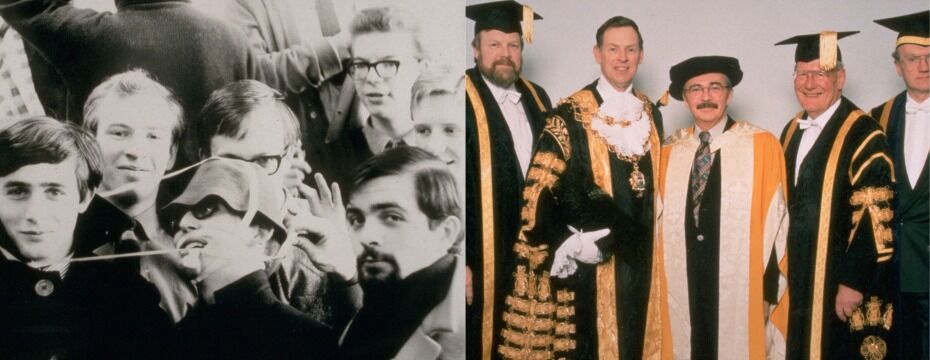
Patrick's graduating class in 1966, and Patrick receiving his Honorary Doctorate in 1996. Photo credit: Patrick le Quément.
He said: “I chose to study in Birmingham as at the time, there was a very well-known teacher at the University, who was about to do his last year of teaching.
"His name was Naum Slutzky and he had been a former professor at the Bauhaus in Germany, which was the most well-known design school of the 20th Century, but it was closed by the Nazis in 1933. I felt like I adhered to the Bauhaus principles, and I was very much influenced by him.”
During his time studying in Birmingham, Patrick was based at the School of Art on Margaret Street, as well as in Bournville, and eventually at the Gosta Green campus, which is now just a stone's throw away from BCU's city centre campus.
He said: “The University was very different back then. The courses and departments were in small units all over the city. But when we moved to Gosta Green, there was more of a community and an organised student life. I soon started playing rugby, but I had to play in the architect’s team as it wasn’t really a game played by art students in any case!
“We had a lot of great times as students and it was the start of some fantastic music groups. I was involved with the Students’ Union, and I remember dealing with a group called the Spencer Davis Group, which were a Birmingham-based band and big at the time.
“I lived in Barnt Green during my studies. It was very quiet and beautiful, and it was always nice to go back there from the hectic city centre. I lived with two other students; one was Colombian and the other was Irish. We’d all been together at St Augustine’s too, so it was a little family for us all.
“But my biggest highlights of university were the terrific teachers that we had and the relationships I formed with the rest of the students too.”
After graduating in 1966, Patrick was keen to become a designer for a top automotive company as he had grown incredibly passionate about cars. After writing over 100 letters to companies, Patrick finally secured himself a role at Simca, which was later brought by US based Chrysler, as an Automobile Designer.
Patrick soon moved to Ford, where he worked for 17 years for both Ford of Britain and Ford Germany, working his way up the ladder to become Head of Design in Germany.
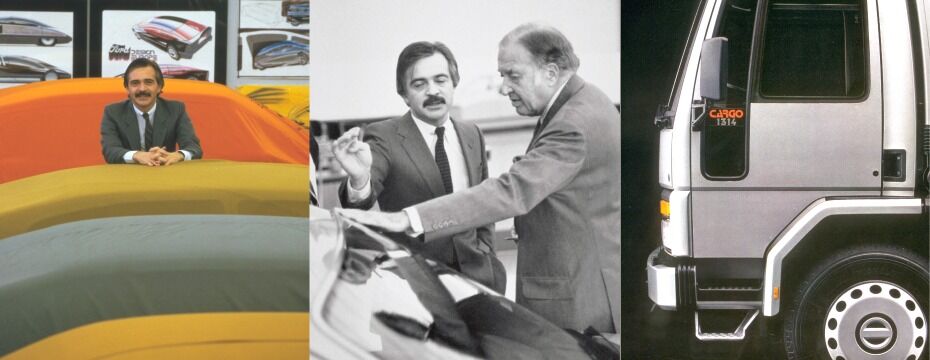
Patrick with covered models in Ford Germany in 1983, Patrick with Henry Ford II in a discussion on the Sierra Model, and the Ford Cargo, launched in 1981. Photo credit: Patrick le Quément.
At Ford, Patrick was responsible for the design of the likes of the Ford Cargo and the Ford Sierra, a vehicle that had a significant influence in the automotive industry and which debuted at the 1982 British International Motor Show in Birmingham.
He said: “When I was at Ford, I was promoted and put in charge of what was the commercial vehicle activity; essentially what the Americans call trucks and the English call lorries!
“As trucks were not looked upon as being as important as cars in the industry, I was given an enormous amount of freedom in designing the Ford Cargo, and it ended up becoming Truck of the Year. In fact, it was produced for 34 years. That was a very important point in my career.”
While working at Ford, Patrick also worked as a Tutor for the Royal College of Art for four years. After 17 years at Ford, Patrick decided to move on, and joined the Volkswagen Audi group in 1985 for two years, until an opportunity came knocking that he couldn’t say no to; Renault.
Patrick was asked to take charge of Renault’s Style Department and to effect any change he saw fit to turn the design function into a strategic corporate tool. Under his drive and vision, Patrick moved forward Renault Corporate Design, replacing the former Renault Style function.
He said: “I arrived at Renault as the Vice President of Design, a company that I had dearly loved since I was a child. In our family car when I was young, and there weren't many cars on the road at that time, one of the games that we played was that each of us had a car manufacturer and we would have to count how many cars we saw of that brand on our trips. So, we would have a Citroën, a Peugeot, and I was Renault. That love for them always stayed with me.
“Throughout my career, I applied to Renault 11 times and every time it didn’t work out. I had totally given up. But eventually, they invited me to join the company. I was interviewed by the relatively new President, Raymond Lévy. He didn’t know a lot about the auto industry as he had come from a totally different sector. But I got on very well with him, and he put me in charge of reviving projects, one of which included the Twingo.”
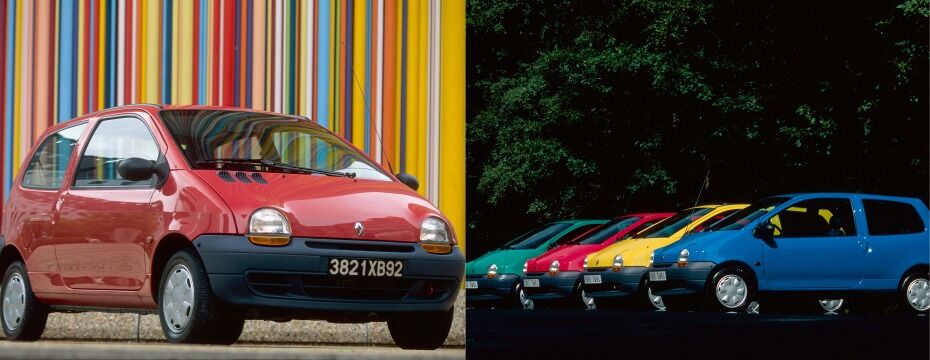
Renault Twingo, 1992. Photo credit: Patrick le Quément.
This year marks 30 years since the Renault Twingo was launched in continental European markets, and it is now in its third generation. It is a four-seater ‘city car’ that was designed under the direction of Patrick, who took an unusual approach and added a front-end layout to the car that resembled a smile.
Patrick said: “The history of the Renault Twingo is one that means a lot to me. The car was a little cutie! I had a very different approach to selling and promoting a design, and when Raymond Lévy first saw it, he saw that the car smiled at him, and he smiled back. I told him that the car was more like a pet, and that when it was cold outside you did not leave it in the street, but instead take it home and place it in front of the fireplace.
“However, the rest of the Directors thought I was mad. I was soon faced with the results of a market research survey about the car. 25% of the people surveyed absolutely loved the car, 25% said that they liked it but wouldn't like to be the first person in the street owning one, and 50% hated it.
“I was told that we’d never had such bad results with 50% hating the car. But in my eyes, I’d never seen such good results with 25% of those surveyed absolutely loving it.
“There was an enormous amount of pressure on me to change it and to wipe the smile off the front-end of the car. I left the meeting and went for a long weekend in the south of France, where I wrote a note to the President, and I told him that one of the biggest risks for the company was not to take any risks, asking him to choose instinctive design versus extinctive marketing. He wrote me a note back which said that he agreed with me. That is how the project was accepted, and how the car became the Twingo.
“What I loved so much about the Twingo was that it wasn’t an aggressive design. It’s not the kind of car that says ‘get out of the way, I’m coming’, and I liked that. It was civilised and intelligent, but also fun. It’s minimal, but also has maximum amount of room. It had fabulous features, like having a rear bench seat, which you could slide forward, so when you go to a supermarket and open your tailgate, you can increase your boot size. It just had so much new technology at the time. It is the car I feel proudest about in my career.”
As well as the Twingo, Patrick spearheaded Renault’s campaign to build the image of innovation and quality it enjoys today, leading on the designs of the likes of the Scénic, Espace, Spider, Kangoo, Laguna, Avantime, Mégane, and zero emission vehicles Twizy and Zoé, as well as the low-cost Dacia range.
He said: “As well as the Renault Twingo, my other highlights at Renault included the Renault Avantime, which wasn’t a success for many different reasons, but it is a car that people remember, and the Renault Mégane, which is now in its fifth generation.”
But Patrick didn’t stop there, and during his time at Renault, he was made a Senior Vice President.
He said: “When I joined Renault, I told Raymond Lévy that the company was very slow. So, he appointed me to lead the interdisciplinary group, where we worked on reducing the time to market the cars, and eventually, we managed to reduce development by one third.
“I was appointed Senior Vice President in 1995, where I oversaw both Design and Corporate Quality. I was also made a member of the Renault Management Committee and answered directly to the Chairman and CEO, Louis Schweitzer.
“However, I don't think I would have got on the board had I been just a designer, I had to get involved with lots of aspects of the company to get there.”
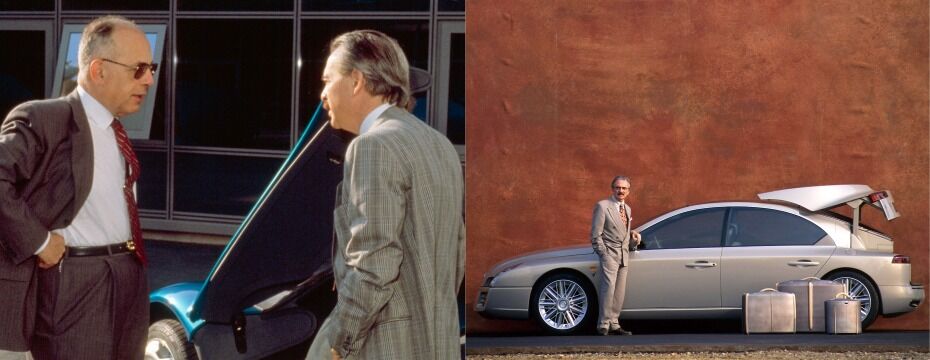
Patrick in discussion with Renault President Raymond Lévy in front of the first concept car of roadster Laguna in 1990, and Patrick in front of the Initiale Paris, a concept car in 1995. Photo credit: Patrick le Quément.
Patrick returned to Birmingham City University to receive an Honorary Doctorate in 1996, and just three years later, he was asked to focus his energy exclusively on design once again. He was given the task of helping Nissan Design to return to a high level of creativity, and he soon became the Chairman of the Joint Design Policy Group which managed design policy within the Renault-Nissan Alliance.
From his time at Ford to Renault, and everything in between, Patrick has now been responsible for an incredible 60 million cars in his career.
He said: “If you were to put them end to end, they would go around the earth 6,438 times. That's a lot of cars!
“In the automobile industry, I was the first Designer to answer directly to the President and become a member of the board. But it didn’t just happen for me; it was a lot of hard work to get to that point.”
After a hugely successful career in the car sector, he won a range of awards including the French Grand Prix of Industrial Design in 1992 and the Knight of the Ordre National of Merit, as well as the Ordre National of the French Legion of Honour, in 1993.
In 2002, the Raymond Loewy Foundation presented him with the Lucky Strike Designer Award, and in 2004, he was elected by Car & Driver as Personality of the Decade. In 2015, the prestigious American prize Eyes on Design Lifetime Design Achievement Award was also given to him.
Patrick ultimately decided to leave Renault in 2009. But a chapter ending for the graduate gave room for a new challenge; this time in the naval industry.
He said: “When I left Renault in 2009, I just couldn't face a future of playing darts or learning how to knit. I wanted to have a creative challenge. I'd been in design management for so many years, but I really wanted to get back to being a designer.
“At the time, I was doing some consultancy work, and I was contacted by a company, Grand Large Yachting, who asked me to look at the problems that they were having in their business. They told me that they make boats and catamarans, and that their customers drive expensive, high-quality cars, but that they were disappointed with what the yachting and naval industry can produce.
“I agreed to help, and they soon asked if I would be interested in designing the exterior design of one of their boats. I told them that I’d never done it before, and it wasn’t my thing. But they told me that they had a design dream team, so I gave it a go. I joined the team, and we designed a boat, a 60-foot catamaran. That boat went on to be elected as European Yacht of the Year.
“In the 13 years I’ve been working in this industry, with the naval architects VPLP Design, I’ve completed 30 designs. In fact, just a few months ago, I was at the Cannes Yachting Festival, where I attended the launch of my 30th project, and there were 11 of my yachts in the harbour.”
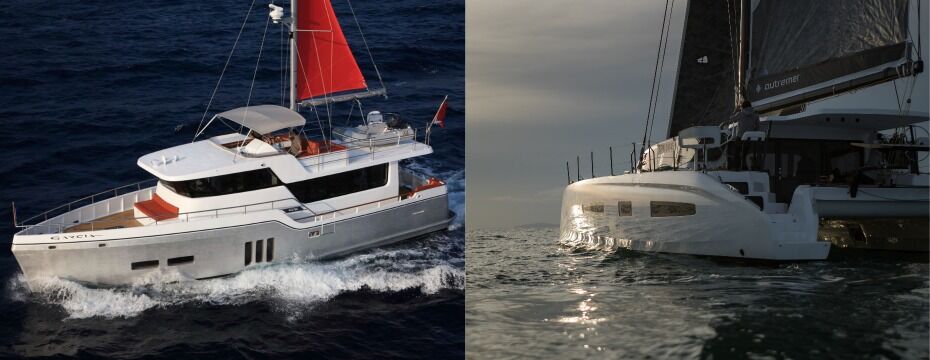
Garcia GT54, the second boat Patrick designed which was elected as Best Motorboat in 2013, and The Outremer 55 which was launched in 2021 and was also elected European Multihull of the Year in 2022. Photo credit: Patrick le Quément.
In 2013, Patrick co-founded, together with Maurille Larivière and Marc Van Petegem, BESIGN - The Sustainable Design School, a higher education international design and sustainable innovation school in Nice. The school is a member of the international network, the Cumulus Association, which is made up of 226 design schools and universities throughout the world.
But it’s not been all work, work, work, for Patrick. The alumnus has enjoyed his success over the years by living between his two homes with his wife, who he met when they were just eight years old and are now celebrating 54 years of marriage, and their children.
The couple and their family enjoy life at their home in Garches, located in the western suburbs of Paris, and their slice of paradise located in Cassis close to Marseille.
After 57 years of incredible success, Patrick has a lot of advice to fellow students and graduates aspiring to follow in his footsteps.
He said: “I have a principle which I've repeated many times, which is very much based upon my own philosophy and what I've attempted to live through as a Head of Design. It is contained in this one phrase: ‘What's important is not to be a king, but to build a kingdom’.
“Remember, empathy is very important and hard work is irreplaceable, and you must work damn hard to succeed. You must also be able to work well with others but remember that there’s no such thing as a free lunch. But most importantly, ask yourself; what are your values? To succeed, you need to know your values and what matters to you.”
Thanks to his commitment to his craft, employers and wider industries, Patrick le Quément has become a name that will be remembered in the history books for many years to come.
He said: “Around 23 years ago, I went to London for an awards ceremony. I was being introduced on to the stage, and the host, who didn’t know how to pronounce my surname, said: ‘And now ladies and gentlemen, I would like you to give a warm welcome to this year's designer of the year, Mr Patrick Lucky Man.’
“Lucky Man may not be my surname, but in reality, I have had a huge amount of very fortunate things happen to me in my life.
“In fact, it turns out that I really am a lucky man after all.”
All photos featured in the article are copyright of Patrick le Quément.
